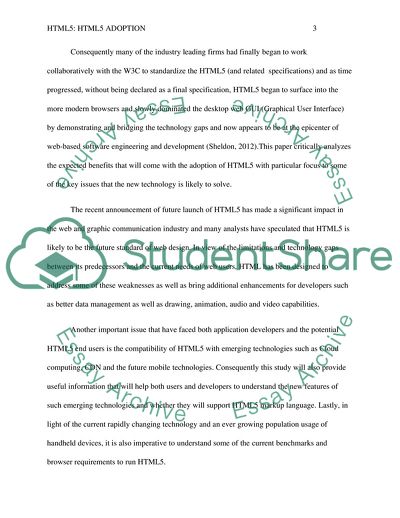Cite this document
(The Expected Benefits of HTML5 Adoption Research Proposal Example | Topics and Well Written Essays - 2250 words, n.d.)
The Expected Benefits of HTML5 Adoption Research Proposal Example | Topics and Well Written Essays - 2250 words. https://studentshare.org/information-technology/1791116-html5-adoption
The Expected Benefits of HTML5 Adoption Research Proposal Example | Topics and Well Written Essays - 2250 words. https://studentshare.org/information-technology/1791116-html5-adoption
(The Expected Benefits of HTML5 Adoption Research Proposal Example | Topics and Well Written Essays - 2250 Words)
The Expected Benefits of HTML5 Adoption Research Proposal Example | Topics and Well Written Essays - 2250 Words. https://studentshare.org/information-technology/1791116-html5-adoption.
The Expected Benefits of HTML5 Adoption Research Proposal Example | Topics and Well Written Essays - 2250 Words. https://studentshare.org/information-technology/1791116-html5-adoption.
“The Expected Benefits of HTML5 Adoption Research Proposal Example | Topics and Well Written Essays - 2250 Words”. https://studentshare.org/information-technology/1791116-html5-adoption.


